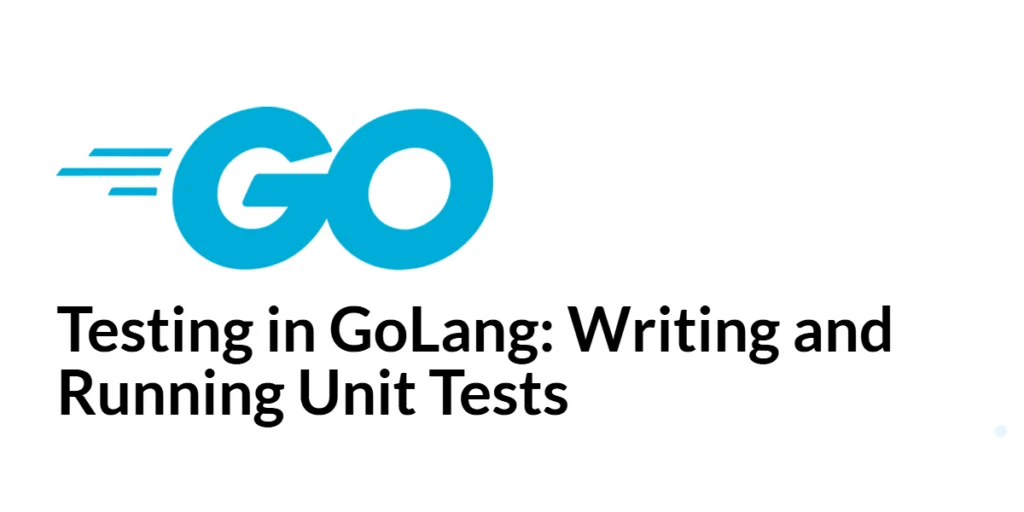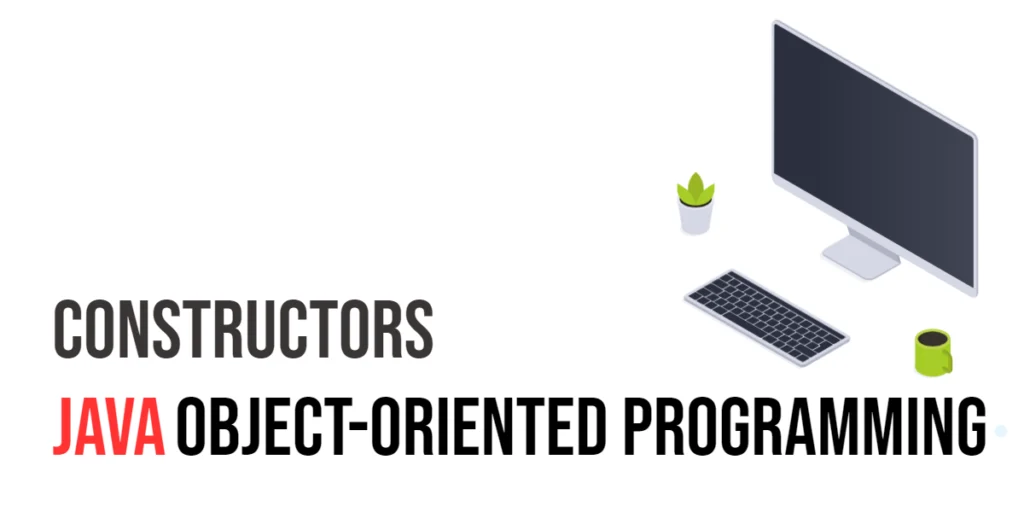Grouping related widgets is a common requirement in many GUI applications, allowing users to understand and interact with the interface more efficiently. QGroupBox, a versatile widget in PyQt6, provides a simple and effective way to group related widgets together. It supports various functionalities, including adding, removing, and customizing child widgets, handling user interactions, and integrating with other widgets.

with hands-on learning.
get the skills and confidence to land your next move.
In this article, we will explore the features of QGroupBox, starting with setting up the development environment and creating a basic QGroupBox. We will then delve into adding and customizing widgets, handling signals, making QGroupBox checkable, and using it with layout managers. Additionally, we will cover advanced features such as nested QGroupBox widgets.
Setting Up the Development Environment
Before we dive into creating and customizing QGroupBox, we need to set up our development environment. This includes installing Python and PyQt6, and ensuring we have everything ready to start writing and running PyQt6 applications.
Installing Python and PyQt6
To get started, ensure you have Python installed on your computer. PyQt6 requires Python 3.6 or later. You can download the latest version of Python from the official Python website. Once Python is installed, open your command prompt or terminal and install PyQt6 using the pip package manager by running the following command:
pip install PyQt6This command will download and install PyQt6 along with all its dependencies.
Setting Up a Development Environment
To write and run your PyQt6 code, you can use any text editor or Integrated Development Environment (IDE). Some popular choices include PyCharm, a powerful IDE for Python with support for PyQt6; VS Code, a lightweight and versatile code editor with Python extensions; and Sublime Text, a simple yet efficient text editor. Choose the one that you’re most comfortable with.
Writing a Simple PyQt6 Application
To ensure everything is set up correctly, let’s write a simple PyQt6 application that creates a window with a QGroupBox widget.
- Create a New Python File: Open your IDE or text editor and create a new Python file named
simple_qgroupbox.py. - Write the Code: Copy and paste the following code into your
simple_qgroupbox.pyfile:
import sys
from PyQt6.QtWidgets import QApplication, QWidget, QVBoxLayout, QGroupBox, QLabel
# Create an instance of QApplication
app = QApplication(sys.argv)
# Create a QWidget instance (main window)
window = QWidget()
window.setWindowTitle('QGroupBox Example')
window.setGeometry(100, 100, 400, 300)
# Create a QVBoxLayout instance
layout = QVBoxLayout()
# Create a QGroupBox instance
group_box = QGroupBox('Group Box Title', window)
# Create a QVBoxLayout for the group box
group_box_layout = QVBoxLayout()
group_box.setLayout(group_box_layout)
# Add a QLabel to the group box
label = QLabel('This is a label inside the group box.', group_box)
group_box_layout.addWidget(label)
# Add the QGroupBox to the main layout
layout.addWidget(group_box)
# Set the layout for the main window
window.setLayout(layout)
# Show the main window
window.show()
# Run the application's event loop
sys.exit(app.exec())- Run the Script: Save your file and run it. You should see a window appear with a
QGroupBoxcontaining a label.
In the code above, we start by importing the necessary modules from PyQt6, including QApplication, QWidget, QVBoxLayout, QGroupBox, and QLabel.
Next, we create an instance of the QApplication class, which is required for any PyQt6 application. This instance manages application-wide resources and settings.
We then create an instance of QWidget, which serves as the main window of the application. We set the title of the window using the setWindowTitle method and define the position and size of the window using the setGeometry method.
A QGroupBox widget is created and added to the main window. We set the title of the QGroupBox using the setTitle method. To arrange the child widgets within the QGroupBox, we create a QVBoxLayout instance and set it as the layout for the QGroupBox using the setLayout method. We then create a QLabel widget and add it to the QGroupBox layout using the addWidget method.
The QGroupBox is added to a vertical layout (QVBoxLayout), which is set as the layout for the main window. Finally, we display the main window using the show method and start the application’s event loop with sys.exit(app.exec()). This event loop waits for user interactions and handles them accordingly, keeping the application running until the user closes the window.
By following these steps, you have successfully set up your development environment and created a simple PyQt6 application with a QGroupBox widget. In the next sections, we’ll explore how to add more widgets to QGroupBox and customize its appearance and behavior.
Creating a Basic QGroupBox
The QGroupBox widget provides a simple and efficient way to group related widgets in PyQt6 applications. In this section, we will create a basic QGroupBox widget and add it to a PyQt6 application.
Introduction to QGroupBox
QGroupBox is a container widget that can group related widgets together, providing a visual and functional grouping. It is a part of the PyQt6 module and provides a variety of methods to add, remove, and customize child widgets.
Code Example: Creating a Basic QGroupBox
To create a basic QGroupBox, follow these steps:
- Create a New Python File: Open your IDE or text editor and create a new Python file named
basic_qgroupbox.py. - Write the Code: Copy and paste the following code into your
basic_qgroupbox.pyfile:
import sys
from PyQt6.QtWidgets import QApplication, QWidget, QVBoxLayout, QGroupBox, QLabel
# Create an instance of QApplication
app = QApplication(sys.argv)
# Create a QWidget instance (main window)
window = QWidget()
window.setWindowTitle('Basic QGroupBox Example')
window.setGeometry(100, 100, 400, 300)
# Create a QVBoxLayout instance
layout = QVBoxLayout()
# Create a QGroupBox instance
group_box = QGroupBox('Group Box Title', window)
# Create a QVBoxLayout for the group box
group_box_layout = QVBoxLayout()
group_box.setLayout(group_box_layout)
# Add a QLabel to the group box
label = QLabel('This is a label inside the group box.', group_box)
group_box_layout.addWidget(label)
# Add the QGroupBox to the main layout
layout.addWidget(group_box)
# Set the layout for the main window
window.setLayout(layout)
# Show the main window
window.show()
# Run the application's event loop
sys.exit(app.exec())- Run the Script: Save your file and run it. You should see a window appear with a
QGroupBoxcontaining a label.
By following these steps, you have created a basic QGroupBox widget in a PyQt6 application. In the next sections, we will explore how to add more widgets to QGroupBox and customize its appearance and behavior.
Adding Widgets to QGroupBox
Adding widgets to QGroupBox is straightforward and can be done using various methods provided by the class. In this section, we will explore how to add different types of widgets to QGroupBox.
Methods to Add Widgets to QGroupBox
You can add widgets to QGroupBox using the layout managers provided by PyQt6, such as QVBoxLayout, QHBoxLayout, and QGridLayout. These layout managers allow you to arrange the widgets within the QGroupBox in different ways.
Code Examples: Adding Various Widgets
To add widgets to QGroupBox, follow these steps:
- Create a New Python File: Open your IDE or text editor and create a new Python file named
add_widgets_qgroupbox.py. - Write the Code: Copy and paste the following code into your
add_widgets_qgroupbox.pyfile:
import sys
from PyQt6.QtWidgets import QApplication, QWidget, QVBoxLayout, QGroupBox, QLabel, QPushButton, QLineEdit
# Create an instance of QApplication
app = QApplication(sys.argv)
# Create a QWidget instance (main window)
window = QWidget()
window.setWindowTitle('Add Widgets to QGroupBox Example')
window.setGeometry(100, 100, 400, 300)
# Create a QVBoxLayout instance
layout = QVBoxLayout()
# Create a QGroupBox instance
group_box = QGroupBox('Group Box Title', window)
# Create a QVBoxLayout for the group box
group_box_layout = QVBoxLayout()
group_box.setLayout(group_box_layout)
# Add various widgets to the group box
label = QLabel('This is a label inside the group box.', group_box)
button = QPushButton('Click Me', group_box)
line_edit = QLineEdit(group_box)
# Add widgets to the group box layout
group_box_layout.addWidget(label)
group_box_layout.addWidget(button)
group_box_layout.addWidget(line_edit)
# Add the QGroupBox to the main layout
layout.addWidget(group_box)
# Set the layout for the main window
window.setLayout(layout)
# Show the main window
window.show()
# Run the application's event loop
sys.exit(app.exec())- Run the Script: Save your file and run it. You should see a window with a
QGroupBoxcontaining a label, a button, and a line edit.
By following these steps, you have successfully added various widgets to a QGroupBox in a PyQt6 application. In the next section, we will explore how to customize the appearance and behavior of QGroupBox.
Customizing QGroupBox
QGroupBox allows you to customize its appearance and behavior to fit the needs of your application. In this section, we will explore how to customize the title, layout, and appearance of QGroupBox.
Customizing the Title, Layout, and Appearance
You can customize the title, layout, and appearance of QGroupBox using various methods provided by the class. This includes setting the title alignment, changing the layout, and applying stylesheets to customize the look and feel.
Code Examples: Customizing the Look and Feel of a QGroupBox
To customize the appearance and behavior of QGroupBox, follow these steps:
- Create a New Python File: Open your IDE or text editor and create a new Python file named
custom_qgroupbox.py. - Write the Code: Copy and paste the following code into your
custom_qgroupbox.pyfile:
import sys
from PyQt6.QtWidgets import QApplication, QWidget, QVBoxLayout, QGroupBox, QLabel, QPushButton, QLineEdit
from PyQt6.QtCore import Qt
# Create an instance of QApplication
app = QApplication(sys.argv)
# Create a QWidget instance (main window)
window = QWidget()
window.setWindowTitle('Custom QGroupBox Example')
window.setGeometry(100, 100, 400, 300)
# Create a QVBoxLayout instance
layout = QVBoxLayout()
# Create a QGroupBox instance
group_box = QGroupBox('Group Box Title', window)
group_box.setAlignment(Qt.AlignmentFlag.AlignCenter) # Center the title
# Create a QVBoxLayout for the group box
group_box_layout = QVBoxLayout()
group_box.setLayout(group_box_layout)
# Add various widgets to the group box
label = QLabel('This is a label inside the group box.', group_box)
button = QPushButton('Click Me', group_box)
line_edit = QLineEdit(group_box)
# Add widgets to the group box layout
group_box_layout.addWidget(label)
group_box_layout.addWidget(button)
group_box_layout.addWidget(line_edit)
# Customize the QGroupBox appearance with a stylesheet
group_box.setStyleSheet("""
QGroupBox {
font-size: 16px;
color: #007ACC;
border: 2px solid #007ACC;
border-radius: 5px;
margin-top: 20px;
}
QGroupBox::title {
subcontrol-origin: margin;
subcontrol-position: top center;
padding: 0 3px;
}
""")
# Add the QGroupBox to the main layout
layout.addWidget(group_box)
# Set the layout for the main window
window.setLayout(layout)
# Show the main window
window.show()
# Run the application's event loop
sys.exit(app.exec())- Run the Script: Save your file and run it. You should see a window with a customized
QGroupBoxcontaining a label, a button, and a line edit, with the title centered and styled according to the stylesheet.
By following these steps, you have successfully customized the appearance and behavior of a QGroupBox in a PyQt6 application. In the next section, we will explore how to use QGroupBox with layout managers.
Using QGroupBox with Layout Managers
QGroupBox can be integrated with different layout managers to arrange its child widgets effectively. In this section, we will explore how to use QGroupBox with QVBoxLayout, QHBoxLayout, and QGridLayout.
Integrating QGroupBox with Layout Managers
You can integrate QGroupBox with various layout managers to arrange the child widgets in different ways. This allows you to create complex and organized user interfaces.
Code Examples: Using QVBoxLayout, QHBoxLayout, and QGridLayout
To use QGroupBox with different layout managers, follow these steps:
- Create a New Python File: Open your IDE or text editor and create a new Python file named
layout_qgroupbox.py. - Write the Code: Copy and paste the following code into your
layout_qgroupbox.pyfile:
import sys
from PyQt6.QtWidgets import QApplication, QWidget, QVBoxLayout, QHBoxLayout, QGridLayout, QGroupBox, QLabel, QPushButton, QLineEdit
# Create an instance of QApplication
app = QApplication(sys.argv)
# Create a QWidget instance (main window)
window = QWidget()
window.setWindowTitle('QGroupBox with Layout Managers Example')
window.setGeometry(100, 100, 400, 300)
# Create a QVBoxLayout instance for the main window
main_layout = QVBoxLayout()
# Create a QGroupBox instance with QVBoxLayout
vbox_group = QGroupBox('VBox Layout')
vbox_layout = QVBoxLayout()
vbox_group.setLayout(vbox_layout)
vbox_layout.addWidget(QLabel('Label 1'))
vbox_layout.addWidget(QPushButton('Button 1'))
# Create a QGroupBox instance with QHBoxLayout
hbox_group = QGroupBox('HBox Layout')
hbox_layout = QHBoxLayout()
hbox_group.setLayout(hbox_layout)
hbox_layout.addWidget(QLabel('Label 2'))
hbox_layout.addWidget(QPushButton('Button 2'))
# Create a QGroupBox instance with QGridLayout
grid_group = QGroupBox('Grid Layout')
grid_layout = QGridLayout()
grid_group.setLayout(grid_layout)
grid_layout.addWidget(QLabel('Label 3'), 0, 0)
grid_layout.addWidget(QPushButton('Button 3'), 0, 1)
grid_layout.addWidget(QLineEdit(), 1, 0, 1, 2)
# Add the QGroupBox widgets to the main layout
main_layout.addWidget(vbox_group)
main_layout.addWidget(hbox_group)
main_layout.addWidget(grid_group)
# Set the layout for the main window
window.setLayout(main_layout)
# Show the main window
window.show()
# Run the application's event loop
sys.exit(app.exec())- Run the Script: Save your file and run it. You should see a window with three
QGroupBoxwidgets, each using a different layout manager (QVBoxLayout,QHBoxLayout, andQGridLayout).
By following these steps, you have successfully used QGroupBox with different layout managers in a PyQt6 application. In the next section, we will explore how to handle QGroupBox signals.
Handling QGroupBox Signals
QGroupBox emits various signals that can be connected to custom slot functions to handle user interactions. In this section, we will explore how to handle the toggled signal for checkable QGroupBox.
Introduction to QGroupBox Signals
The QGroupBox widget emits signals that can be connected to slot functions to respond to user interactions. One of the most commonly used signals is the toggled signal, which is emitted when a checkable QGroupBox is toggled.
Code Examples: Handling toggled Signal
Let’s create a PyQt6 application that demonstrates how to handle the toggled signal of a checkable QGroupBox.
- Create a New Python File: Open your IDE or text editor and create a new Python file named
qgroupbox_signals.py. - Write the Code: Copy and paste the following code into your
qgroupbox_signals.pyfile:
import sys
from PyQt6.QtWidgets import QApplication, QWidget, QVBoxLayout, QGroupBox, QLabel, QCheckBox
# Slot function to handle toggled signal
def on_group_box_toggled(checked):
label.setText(f'Group Box Checked: {checked}')
# Create an instance of QApplication
app = QApplication(sys.argv)
# Create a QWidget instance (main window)
window = QWidget()
window.setWindowTitle('QGroupBox Signals Example')
window.setGeometry(100, 100, 400, 300)
# Create a QVBoxLayout instance
layout = QVBoxLayout()
# Create a checkable QGroupBox instance
group_box = QGroupBox('Checkable Group Box', window)
group_box.setCheckable(True)
# Connect the toggled signal to the slot function
group_box.toggled.connect(on_group_box_toggled)
# Create a QVBoxLayout for the group box
group_box_layout = QVBoxLayout()
group_box.setLayout(group_box_layout)
# Add a QLabel to the group box
label = QLabel('Group Box Checked: False', group_box)
group_box_layout.addWidget(label)
# Add the QGroupBox to the main layout
layout.addWidget(group_box)
# Set the layout for the main window
window.setLayout(layout)
# Show the main window
window.show()
# Run the application's event loop
sys.exit(app.exec())- Run the Script: Save your file and run it. You should see a window with a checkable
QGroupBoxcontaining a label. When you check or uncheck theQGroupBox, the label will update to reflect the checked state.
By following these steps, you have successfully handled the toggled signal of a checkable QGroupBox in a PyQt6 application. In the next section, we will explore how to make QGroupBox checkable and manage its state.
Making QGroupBox Checkable
QGroupBox can be made checkable, allowing users to toggle its state. In this section, we will explore how to make QGroupBox checkable and manage its state changes.
Making QGroupBox Checkable and Managing Its State
You can make QGroupBox checkable using the setCheckable method. Once checkable, you can manage its state using the isChecked method and respond to state changes using the toggled signal.
Code Examples: Creating a Checkable QGroupBox and Handling Its State Changes
To create a checkable QGroupBox and manage its state changes, follow these steps:
- Create a New Python File: Open your IDE or text editor and create a new Python file named
checkable_qgroupbox.py. - Write the Code: Copy and paste the following code into your
checkable_qgroupbox.pyfile:
import sys
from PyQt6.QtWidgets import QApplication, QWidget, QVBoxLayout, QGroupBox, QLabel, QPushButton
# Slot function to handle toggled signal
def on_group_box_toggled(checked):
label.setText(f'Group Box Checked: {checked}')
button.setEnabled(checked)
# Create an instance of QApplication
app = QApplication(sys.argv)
# Create a QWidget instance (main window)
window = QWidget()
window.setWindowTitle('Checkable QGroupBox Example')
window.setGeometry(100, 100, 400, 300)
# Create a QVBoxLayout instance
layout = QVBoxLayout()
# Create a checkable QGroupBox instance
group_box = QGroupBox('Checkable Group Box', window)
group_box.setCheckable(True)
# Connect the toggled signal to the slot function
group_box.toggled.connect(on_group_box_toggled)
# Create a QVBoxLayout for the group box
group_box_layout = QVBoxLayout()
group_box.setLayout(group_box_layout)
# Add a QLabel and QPushButton to the group box
label = QLabel('Group Box Checked: False', group_box)
button = QPushButton('Click Me', group_box)
button.setEnabled(False)
group_box_layout.addWidget(label)
group_box_layout.addWidget(button)
# Add the QGroupBox to the main layout
layout.addWidget(group_box)
# Set the layout for the main window
window.setLayout(layout)
# Show the main window
window.show()
# Run the application's event loop
sys.exit(app.exec())- Run the Script: Save your file and run it. You should see a window with a checkable
QGroupBoxcontaining a label and a button. When you check or uncheck theQGroupBox, the label will update to reflect the checked state, and the button will be enabled or disabled accordingly.
By following these steps, you have successfully created a checkable QGroupBox and managed its state changes in a PyQt6 application. In the next section, we will explore advanced features of QGroupBox, including nested QGroupBox widgets.
Advanced QGroupBox Features
QGroupBox offers various advanced features that can enhance its functionality and user experience. In this section, we will explore how to implement nested QGroupBox widgets and integrate QGroupBox with other PyQt6 widgets.
Nested QGroupBox Widgets
QGroupBox widgets can be nested within each other to create complex and organized user interfaces. This allows you to group related widgets together in a hierarchical structure.
Code Examples: Implementing Nested QGroupBox
To implement nested QGroupBox widgets, follow these steps:
- Create a New Python File: Open your IDE or text editor and create a new Python file named
nested_qgroupbox.py. - Write the Code: Copy and paste the following code into your
nested_qgroupbox.pyfile:
import sys
from PyQt6.QtWidgets import QApplication, QWidget, QVBoxLayout, QGroupBox, QLabel, QPushButton, QLineEdit
# Create an instance of QApplication
app = QApplication(sys.argv)
# Create a QWidget instance (main window)
window = QWidget()
window.setWindowTitle('Nested QGroupBox Example')
window.setGeometry(100, 100, 400, 300)
# Create a QVBoxLayout instance for the main window
main_layout = QVBoxLayout()
# Create the outer QGroupBox
outer_group = QGroupBox('Outer Group Box', window)
outer_layout = QVBoxLayout()
outer_group.setLayout(outer_layout)
# Create the inner QGroupBox
inner_group = QGroupBox('Inner Group Box', outer_group)
inner_layout = QVBoxLayout()
inner_group.setLayout(inner_layout)
# Add widgets to the inner group box
inner_layout.addWidget(QLabel('Inner Label 1'))
inner_layout.addWidget(QPushButton('Inner Button 1'))
# Add widgets to the outer group box
outer_layout.addWidget(inner_group)
outer_layout.addWidget(QLabel('Outer Label 1'))
outer_layout.addWidget(QPushButton('Outer Button 1'))
# Add the outer QGroupBox to the main layout
main_layout.addWidget(outer_group)
# Set the layout for the main window
window.setLayout(main_layout)
# Show the main window
window.show()
# Run the application's event loop
sys.exit(app.exec())- Run the Script: Save your file and run it. You should see a window with nested
QGroupBoxwidgets, each containing different widgets.
By following these steps, you have successfully implemented nested QGroupBox widgets in a PyQt6 application.
Conclusion
In this article, we explored the versatile and powerful QGroupBox widget in PyQt6. We started with an introduction to QGroupBox and its importance in GUI applications. We then walked through setting up your development environment, creating a basic QGroupBox, and adding widgets to it.
We demonstrated how to customize the appearance and behavior of QGroupBox, handle QGroupBox signals, make QGroupBox checkable, and use QGroupBox with layout managers. Additionally, we covered advanced features such as nested QGroupBox widgets.
The examples and concepts covered in this article provide a solid foundation for working with QGroupBox in PyQt6. However, the possibilities are endless. I encourage you to experiment further and explore more advanced features and customizations. Try combining QGroupBox with other PyQt6 widgets and see how you can create rich, interactive user interfaces. Don’t hesitate to experiment with different styles, signals, and slots to make your applications unique and engaging.
Additional Resources for Learning PyQt6 and QGroupBox
To continue your journey with PyQt6 and QGroupBox, here are some additional resources that will help you expand your knowledge and skills:
- PyQt6 Documentation: The official documentation is a comprehensive resource for understanding the capabilities and usage of PyQt6. PyQt6 Documentation
- Online Tutorials and Courses: Websites like Real Python, Udemy, and Coursera offer detailed tutorials and courses on PyQt6, catering to different levels of expertise.
- Books: Books such as “Rapid GUI Programming with Python and Qt” by Mark Summerfield provide in-depth insights and practical examples.
- Community and Forums: Join online communities and forums like Stack Overflow, Reddit, and the PyQt mailing list to connect with other PyQt developers, ask questions, and share knowledge.
- Sample Projects and Open Source: Explore sample projects and open-source PyQt6 applications on GitHub to see how others have implemented various features and functionalities.
By leveraging these resources and continuously practicing, you’ll become proficient in PyQt6 and be well on your way to developing impressive and functional desktop applications.







